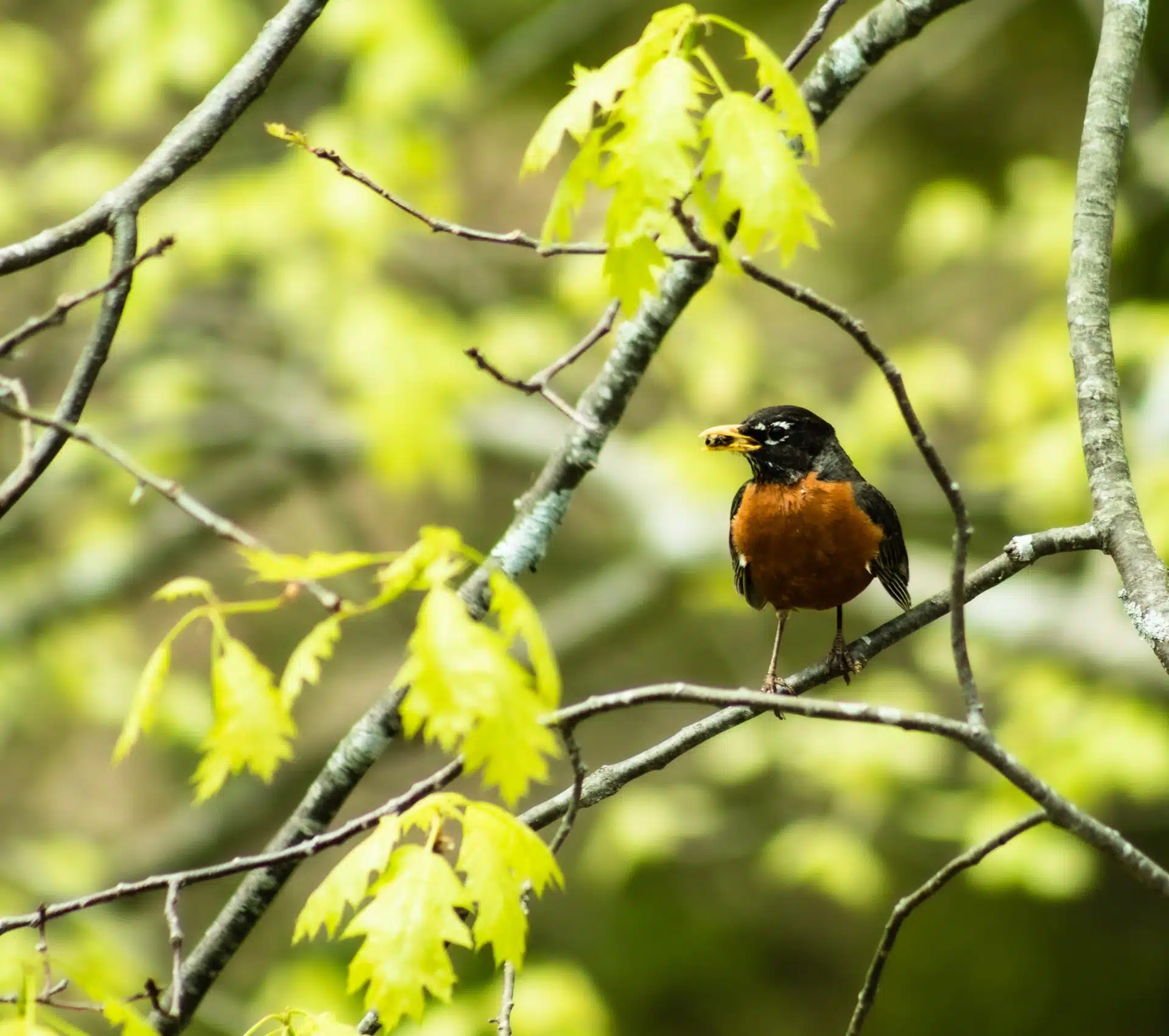Nature Profile
Birds
American Robin
Turdus migratorius

American Robin
Voice: Rapid three syllable word that sounds like cheerily, cheer up, cheerio with pauses between; call is a loud rapid peek with a soft alternating tut .
Many people in Ohio consider American Robins the harbinger of spring however during mild winters they can be seen wintering in their breeding range. They are common birds across North America and can frequently be found on lawns, fields, and city parks, edge of forest and even near the tree line on mountains and tundra. In the winter they spend more time roosting and foraging in trees and less time on the ground.
American Robins consume a wide variety of food including various fruits and invertebrates. In the spring and summer they eat primarily earthworms, snails and insects including grubs, and caterpillars. They find their ground prey by sight. They hop and abruptly stop staring, motionless, at the ground with the head cocked to one side searching. In the winter american robins’ diet is largely made up of fruit including fruit from honeysuckle, chokecherries, hawthorn, dogwood, sumac and juniper.
American robins mate from April through July. Males attract females by singing, spreading their tails, shaking their wings and inflating their throats. Female american robins may have two or three broods a season. However only forty percent of nests successfully produce young and only twenty five percent of those fledged young survive to November.
Generally female american robins choose a nest sites with one or several horizontal branches on the lower half of a tree just under a dense layer of leaves. However american robins have been known to build nest in gutters, on outdoor light fixtures and structures. Females build a 6-8 inchs diameter cup shaped nest from the inside out spreading dead grass and twigs with the wrist of one of her wings. Once the shape is formed mud is pressed on the inside of the next with the females’ breast. The nest is finish with a lining of soft materials including fine grass and feathers. Sometimes males help collect materials for the nest.
Females lay three to five glossy light blue eggs. Females incubate the eggs until the young hatch in 11-14 days. Both males and females then to the young. Chicks leave the nest 14-16 days. Fledgling rely on both parent for up to fourteen days after leaving the nest until they are able to fully fly.
According to the North American Breeding Bird Survey american robins are numerous and widespread, and their populations are stable or increasing throughout their range. However american robins forage on lawns which makes them vulnerable to pesticide poisoning. Local populations can decrease depending on the amount of pesicides in a given area.




